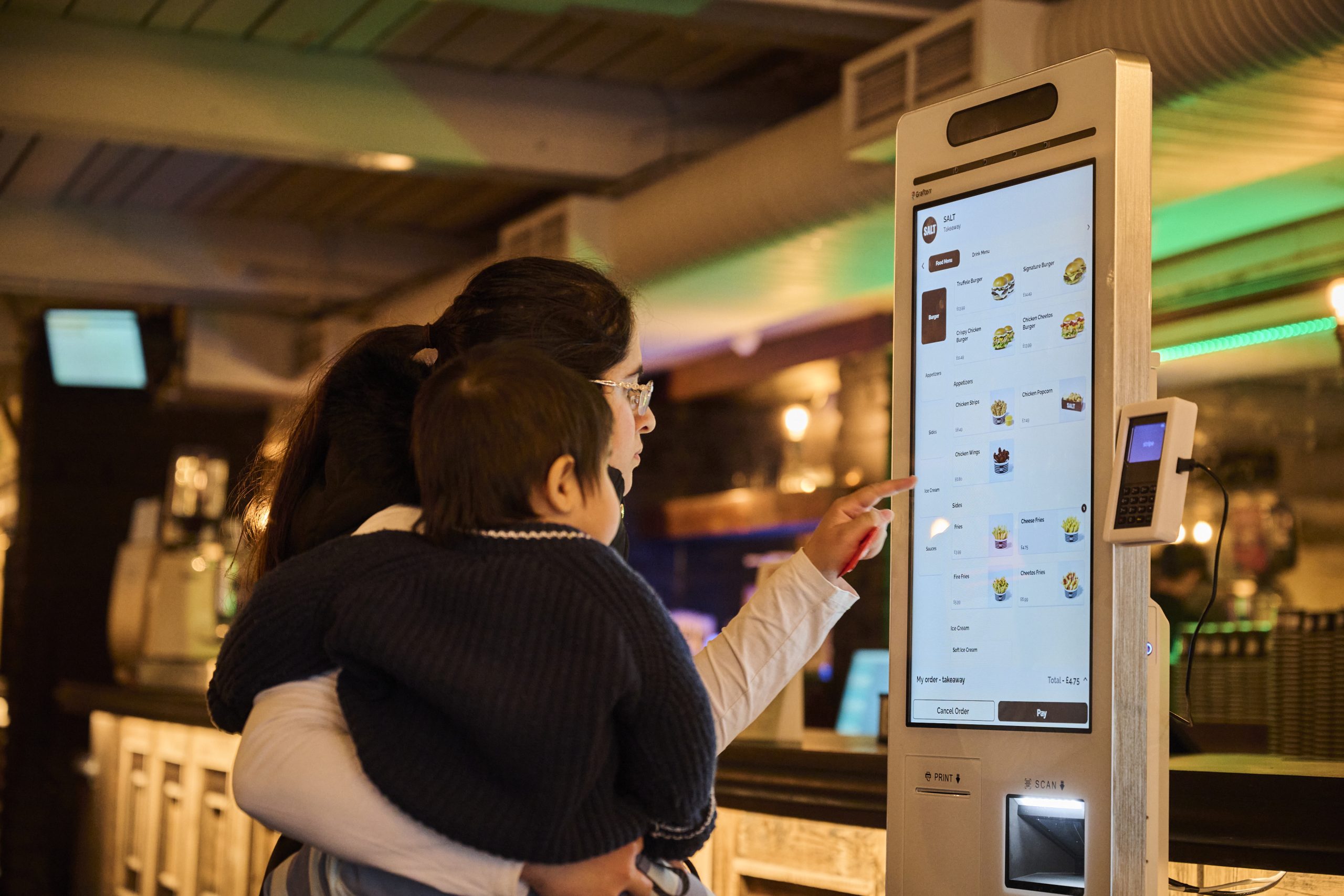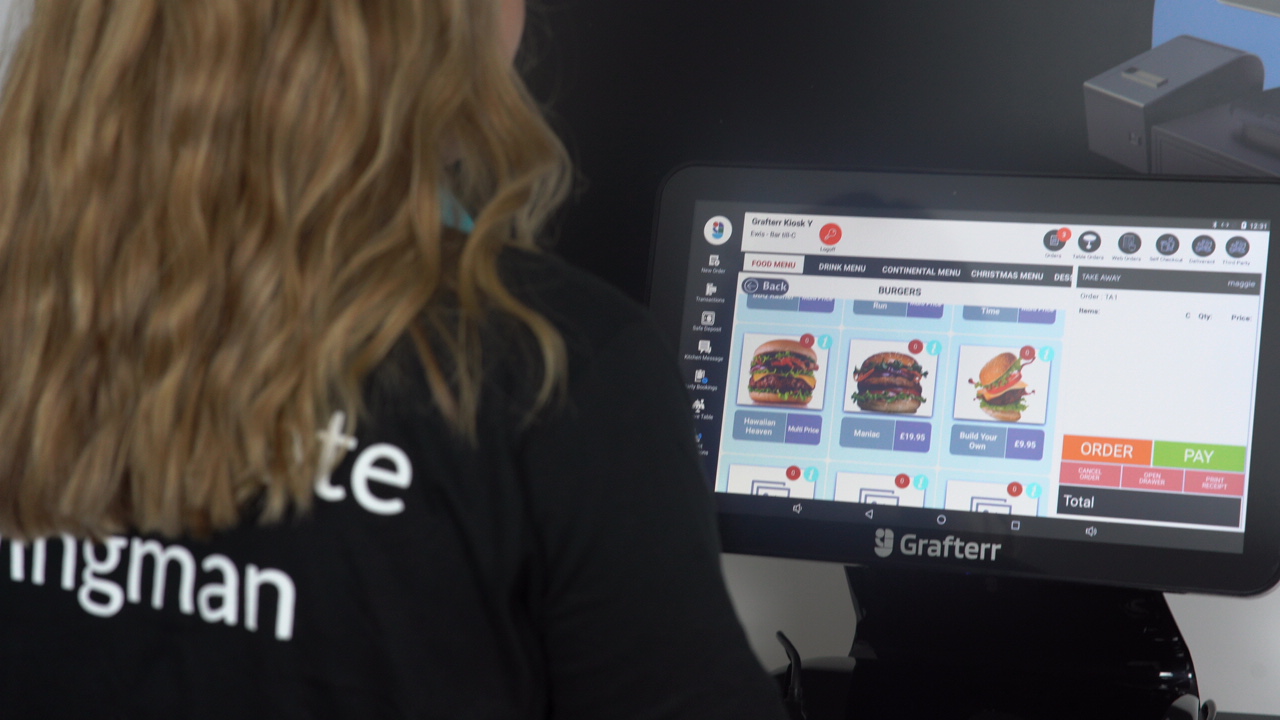Self-ordering kiosks are no longer a novelty. In 2025, they are a core part of fast food in the UK. Major brands such as McDonald’s and Subway have invested heavily in kiosks, while independent chains are also looking for affordable options.
Kiosks help reduce queues, increase average order value, and improve accuracy. But not all systems are equal. Choosing the right provider means comparing features, hardware costs, pricing, and support.
Self-ordering is not about replacing the traditional way of ordering at the counter or through staff. Instead, it gives customers another option to order in a way that feels faster and more convenient. For fast food chains, it means customers can choose the method that suits them best, whether that’s speaking to a team member or using a kiosk.
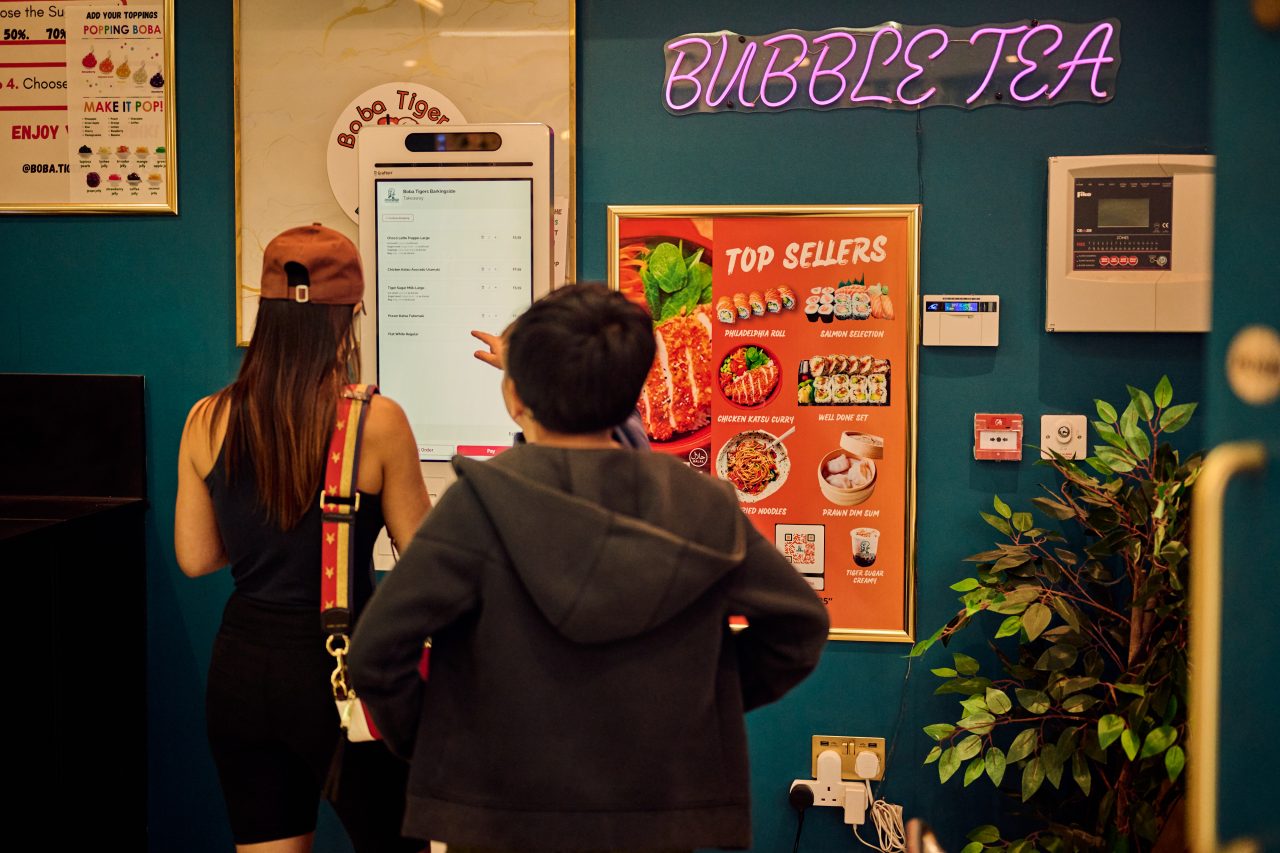
The benefit is in balance. Many UK operators now combine staffed tills with kiosks to manage peak hours. This hybrid model allows queues to move quickly while still giving customers the personal interaction they may want. In practice, kiosks help staff focus on food preparation and customer service rather than taking every single order.
It is also worth noting that kiosks encourage different behaviours. Customers take more time to explore the menu, consider add-ons, and customise their order. This often leads to higher average spend and fewer mistakes compared with rushed counter service. Far from replacing people, kiosks work best when they support them.
What is a self-ordering kiosk?
A self-ordering kiosk is a touchscreen terminal that lets customers browse menus, place orders, and pay without staff intervention. In fast food environments, kiosks are designed to speed up throughput, upsell extras, and handle integrated payments.
Kiosks come in different models: wall-mounted, free-standing, or tabletop.
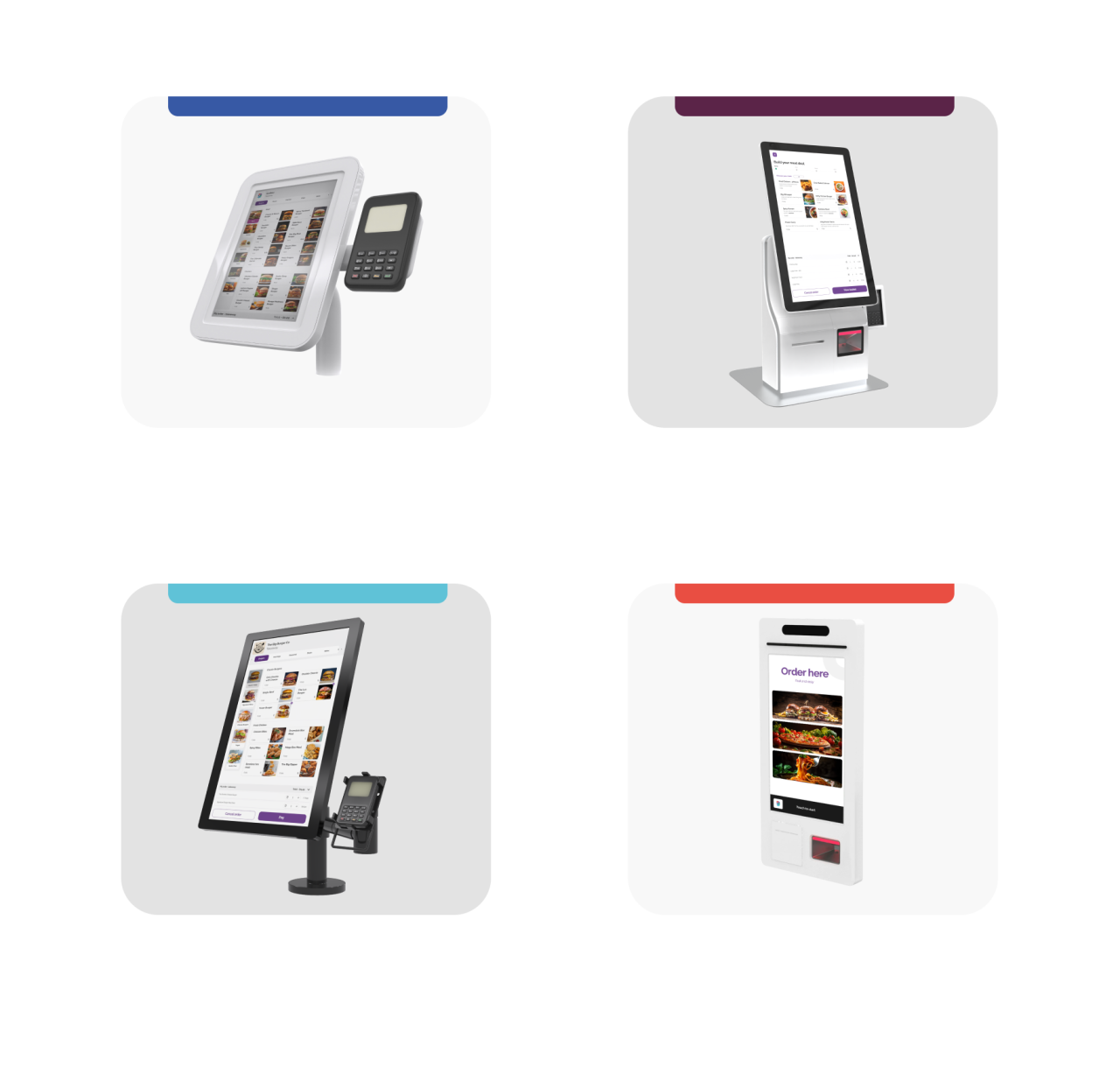
Most providers link directly with a point-of-sale system and support card, mobile wallet, or QR payments.
Below we compare some of the leading self-ordering kiosk providers available in the UK in 2025.
1. Grafterr

Grafterr offers one of the most cost-effective kiosk solutions in the UK. Its range includes a 15.6″ Tabletop Kiosk, 21.5″ Slim Kiosk, and 24″ Kiosk Pro.
Features
- Fully integrated with Grafterr POS
- Supports card, contactless, Apple Pay and Google Pay
- Built-in printers for instant receipts
- Automatic upselling prompts
- Low monthly software fees
Pricing
Grafterr’s kiosks operate on a one-time hardware cost with low ongoing licence fees, making them one of the most affordable options for UK fast food chains. Transaction fees apply when paired with Grafterr Pay.
Pros
- Low monthly kiosk licence fees
- Custom branded menus
- Ideal for both single-site and multi-site operators
- Strong UK-based support
Cons
- Works best when paired with Grafterr POS, less suitable for third-party POS
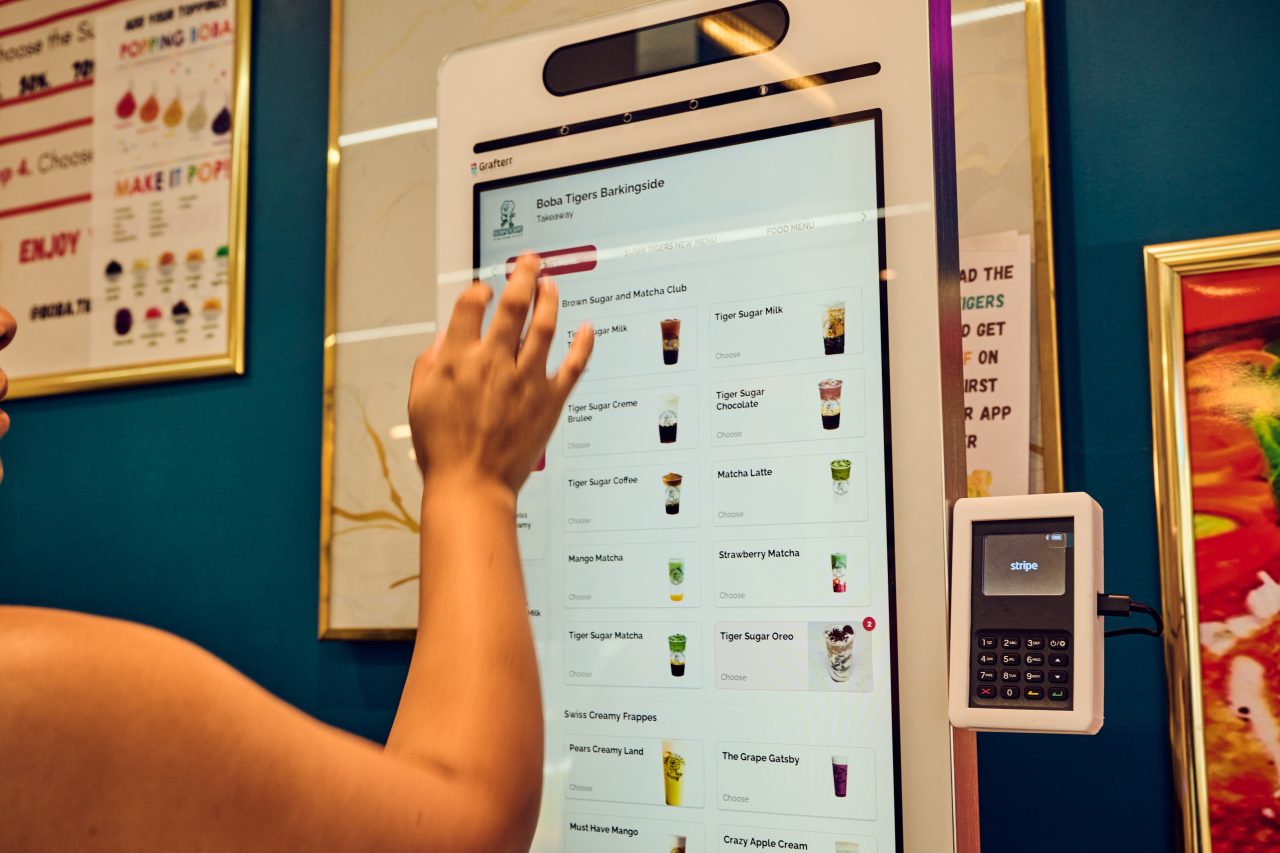
2. ePOS now kiosks

Epos Now is a well-established POS company that offers kiosks designed for quick-service environments.
Features
- Syncs with Epos Now POS system
- Real-time reporting and stock tracking
- Multiple screen sizes available
- Works with popular UK payment processors
Pricing
Kiosk hardware operate on a one-time hardware cost, plus ongoing software subscriptions for POS and integrations.
Pros
- Large partner ecosystem
- Flexible deployment options
- Scalable for bigger chains
Cons
- Higher upfront hardware cost
- Subscription fees can add up
3. Flipdish

Flipdish is an ordering platform that provides self-service kiosks as part of its suite for restaurants and fast food chains.
Features
- Branded kiosks that integrate with Flipdish online ordering and loyalty tools
- Upselling features built in
- Cloud-based menu management
- Marketing add-ons such as loyalty and customer engagement
Pricing
Flipdish charges a monthly subscription plus transaction fees, with kiosks typically rented or purchased as part of a package. Costs vary depending on contract terms.
Pros
- Strong loyalty and marketing features
- Integrated online and kiosk ordering
- Branded experience
Cons
- Ongoing monthly subscription
- Less cost-effective for small independents
4. Sumup kiosks

Known for payment readers, SumUp also offers kiosk solutions in partnership with third-party hardware.
Features
- Easy card and contactless payments
- Integrates with SumUp POS system
- Compact kiosk options available
- Focused on smaller businesses and quick setups
Pricing
SumUp generally works on a pay-as-you-go model, with card transaction fees of 1.69%. Hardware costs vary depending on the kiosk type and supplier.
Pros
- Simple setup process
- No long-term contracts
- Familiar payment brand in the UK
Cons
- Limited kiosk hardware range compared with others
- Basic functionality compared with dedicated kiosk providers
5. Kayana

Kayana is a newer UK-based provider of kiosk and ordering solutions, focusing on independent restaurants and cafés.
Features
- Tabletop and free-standing kiosks available
- Integrates with Kayana POS and QR ordering
- Supports split bill payments
- Marketing dashboard with customer insights
Pricing
Kayana kiosks are sold on a subscription model with monthly fees, plus hardware costs depending on the model chosen.
Pros
- Affordable for smaller operators
- Simple interface
- Good fit for cafés and takeaways
Cons
- Fewer enterprise features
- Dependent on Kayana ecosystem
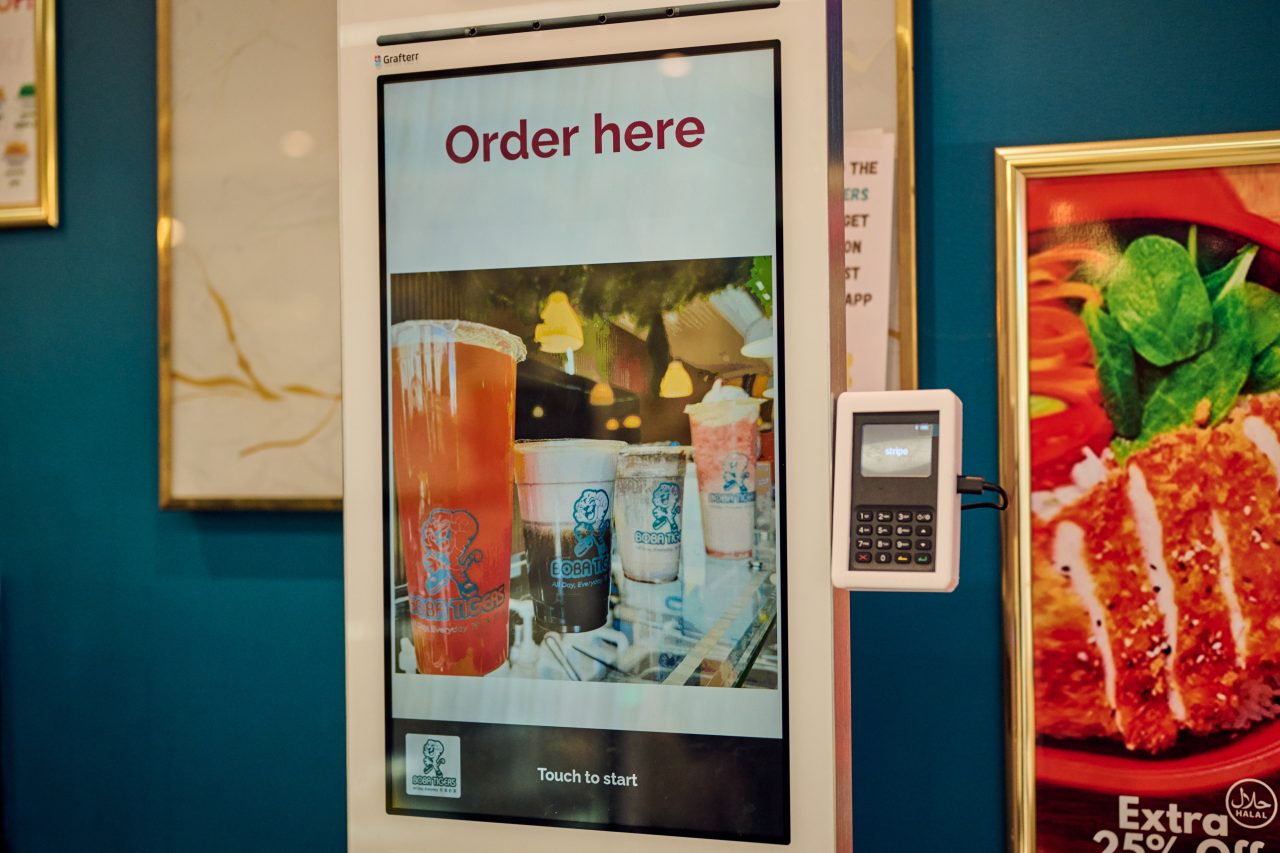
Choosing the right kiosk system
For UK fast food chains, the best kiosk depends on size, budget, and long-term goals.
Grafterr is the only option on this list with low monthly kiosk licence fees, making it a cost-effective choice for operators seeking modern features without subscription costs. Epos Now and Flipdish offer more established ecosystems. SumUp is best suited for small operators testing kiosk ordering, while Kayana appeals to independent cafés looking for simplicity.
By comparing costs, features, and scalability, fast food operators can choose the kiosk system that best fits their needs in 2025.
